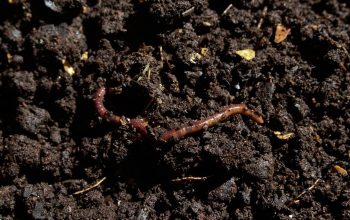Despite drier-than-typical conditions last week in Iowa, the abundant rainfall in May has continued to drain into deeper soil. This is important for crop growth, according to the U.S. Department of Agriculture and Wright County farmers.
As of June 2, about 92% of Iowa’s corn crop had been planted — about five days behind schedule — along with about 84% of soybeans. Austin Charlson, local owner and operator of “Double A Farms”, spoke with The Wright County Monitor about crop conditions in Wright County. He reiterated the delay in planting when he spoke with The Wright County Monitor.
The average person, myself included, may need help to understand how weather affects crop growth. Beyond the need for sun and water, crops need certain soil, a just right amount of top and subsoil moisture, and a certain amount of cloud cover. In recent years, Wright County has been in a sweet spot for an abundant and successful yield due to ‘just right’ conditions, despite the overall drought conditions.
At the time of the authoring of this article, about 92% of the state’s subsoil had adequate or a surplus of moisture for growing crops. That is an obvious increase from the USDA’s report in late May and is more than double the percentage of a year ago.
Topsoil moisture fluctuates quickly and is vulnerable to wind, heat, and low humidity. “Crops don’t like wet feet,” Charlson joked. If the plants have to reach down further in the soil to get the water, the farmer will have a sturdier plant, resulting in better yields with a less vulnerable plant. If there is a lot of topsoil moisture, the farmers run a chance of having weak crops.
Charlson stated he, and other farmers in our area, have had to replant a few spots because of the heavy rainfall in Spring. After planting beans, he was still determining if the bean plants would emerge. According to Charlson, who has been entrenched in agriculture for more than 30 years, if fields are too wet, as they have been, a hard crust forms on the soil. If this happens, the soybean plants have a hard time breaking through.
Some areas have subsoil that is close to its maximum water saturation. Iowa soil typically holds a maximum of 10 to 11 inches of moisture in the first 5 feet of depth. A recent study coming from Iowa State University Extension and Outreach in Northwest Iowa found that there are more than 10 inches of moisture in the soil near Sibley, Ireton, and Calumet.
That adds up to five times the amount of moisture the area had less than two years ago. Based on current conditions, Charlson and other farmers in our area are “a little pessimistic,” about 2024’s yield compared to past years. “I suspect we will be a little lower [in yield] than last year. We’ve had a little bit of a rough start and I think it will dry up this summer. We’ve gotten a lot of rain, but we have not fully recharged that subsoil.”
According to the USDA, there was an average precipitation of about 0.74 inches within the first week of June compared with a normal of 1.08. “In a drought, you worry about the short rain amount. We need a lot of water to get the crops to grow. But with the droughts you can get in the fields earlier, this is good with the plants growing in cooler temps,” Charlson shared. Also, according to Charlson, night temperatures must be lower than 70 degrees to allow for crops, most importantly corn, a chance to rest. Without giving corn a chance to rest, it continues to grow at a fast rate and that isn’t good for yield, either.
The Federal Climate Prediction Center released a report predicting that none of Iowa would develop drought until at least the end of August. This works out well for farmers in our area.
“If [drought] holds off until August, we will be fine. We should have decent crops, but not like last year.”


